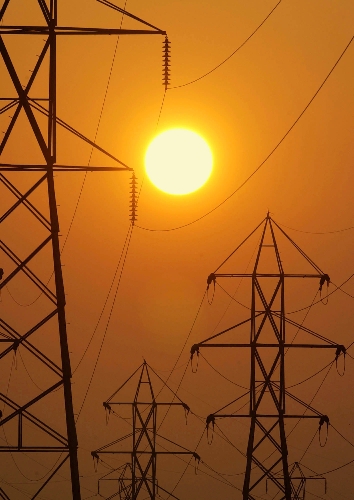Electric rates not falling along with fuel costs

NEW YORK – A plunge in the price of natural gas has made it cheaper for utilities to produce electricity. But the savings aren’t translating to lower rates for customers. Instead, U.S. electricity prices are going up.
Electricity prices are forecast to rise slightly this summer. But any increase is noteworthy because natural gas, which is used to produce nearly a third of the country’s power, is 43 percent cheaper than a year ago. A long-term downward trend in power prices could be starting to reverse, analysts say.
"It’s caused us to scratch our heads," said Tyler Hodge, an analyst at the Energy Department who studies electricity prices.
The recent heat wave that gripped much of the country increased demand for power as families cranked up their air conditioners. And that may boost some June utility bills. But the nationwide rise in electricity prices is attributable to other factors, analysts say:
– In many states, retail electricity rates are set by regulators every few years. As a result, lower power costs haven’t yet made their way to customers.
– Utilities often lock in their costs for natural gas and other fuels years in advance. That helps protect customers when fuel prices spike, but it prevents customers from reaping the benefits of a price drop.
– The cost of actually delivering electricity, which accounts for 40 percent of a customer’s bill on average, has been rising fast. That has eaten up any potential savings from the production of electricity.
Utilities are building transmission lines, installing new equipment and fixing up power plants after what analysts say has been years of underinvestment.
This may reverse what has been a gradual decline in retail electricity prices. Adjusted for inflation, the average retail electricity price has been drifting mostly lower since 1984, when it was 16.7 cents per kilowatt-hour.
Electricity in Southern Nevada costs 11.4 cents per kilowatt hour for residential users.
Local power utility NV Energy began returning $182 million to ratepayers in October as a result of lower natural gas prices. The cost of natural gas for power plants is passed directly to consumers, with no profit or loss for NV Energy. October’s rate drop cut power bills about 4 percent, from a monthly average of around $146 down to $140.
But in May 2011, the company wrapped up a five-year, $4.3 billion development initiative to add plants and distribution lines, and the tail end of those investments appeared in ratepayers’ bills beginning Jan. 1. That’s when the average monthly local power bill rose 3.5 percent, to $144.55.
The average U.S. residential electricity price is expected to be 12.4 cents per kilowatt hour for the June-to-August period, up 2.4 percent from the same time last year. For the full year, electricity prices are expected to rise 2 percent.
In a typical summer month, that would mean an extra $3 on a residential bill .
Electricity pricing is complicated, and it differs from state to state .
Natural gas has plummeted in price because of a dramatic increase in U.S. gas production during the past few years and a warm winter that allowed supplies to build up.
Cheaper natural gas has led to lower wholesale power prices. Power companies operating in states with competitive markets have seen profits and stock prices tumble along with wholesale prices. Those operating in more regulated power markets have fared much better because their rates don’t fluctuate as much.
The lower wholesale prices have made it through to some customers’ bills, and others could see a temporary dip next year. At the very least, analysts say, the drop in natural gas prices is keeping electric rates from rising faster than they otherwise would have.
Customers could still get a break this summer – if not on their electric rates, then at least from Mother Nature.
This summer has gotten off to a scorching start in much of the country and is expected to be hotter than normal. But it isn’t expected to be as hot as the last two summers, according to Matt Rogers at Commodity Weather Group, which provides forecasts for the energy industry.
Don’t get too excited, though. The Energy Department’s Hodge calculates that if the summer forecast holds true, customers will save an average of $5.95 per month.
Review-Journal writer Jennifer Robison contributed to this report.












